|
|
The Holy Martyr Glykeria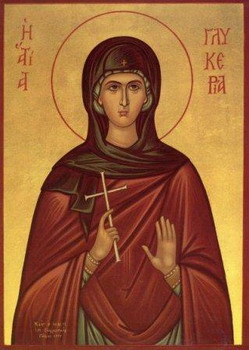 The daughter of a governor of Rome, she became poor after her father's death and went to live in Trajanopolis in Thrace. In the time of the wicked Emperor Antoninus, Glykeria was brought to offer sacrifice to the idol of Zeus. She traced the Cross on her forehead and, when the governor asked her where was her lamp (for they all carried lamps in their hands), Glykeria indicated the Cross on her forehead and said: 'This is my lamp!' At her prayers, the idol was struck by lightning and broken into pieces. The governor was furious with her and commanded that she be thrown into prison. He sealed the door of the prison, intending to starve the maiden to death, but an angel of God appeared to Glykeria and gave her heavenly food. After a certain time, when the governor reckoned that the maiden must have died of hunger, he opened the prison and was astounded to see her in good health, bright and merry. The warder, Laodicius, seeing this marvel, himself confessed Christ the Lord and was at once beheaded. After that Glykeria was thrown into a burning furnace, but she remained untouched by the flames. Standing in the midst of the fire, she praised the Lord, commemorating the wonder with the Three Children in the burning fiery furnace in Babylon. Finally, she was thrown to the lions and, praying to God, this holy maiden gave her soul into the hands of the Lord for whom she had heroically suffered much torture. She suffered with honour in the year 141. A healing myrrh flowed from her relics, which healed the sick of the gravest illnesses. The daughter of a governor of Rome, she became poor after her father's death and went to live in Trajanopolis in Thrace. In the time of the wicked Emperor Antoninus, Glykeria was brought to offer sacrifice to the idol of Zeus. She traced the Cross on her forehead and, when the governor asked her where was her lamp (for they all carried lamps in their hands), Glykeria indicated the Cross on her forehead and said: 'This is my lamp!' At her prayers, the idol was struck by lightning and broken into pieces. The governor was furious with her and commanded that she be thrown into prison. He sealed the door of the prison, intending to starve the maiden to death, but an angel of God appeared to Glykeria and gave her heavenly food. After a certain time, when the governor reckoned that the maiden must have died of hunger, he opened the prison and was astounded to see her in good health, bright and merry. The warder, Laodicius, seeing this marvel, himself confessed Christ the Lord and was at once beheaded. After that Glykeria was thrown into a burning furnace, but she remained untouched by the flames. Standing in the midst of the fire, she praised the Lord, commemorating the wonder with the Three Children in the burning fiery furnace in Babylon. Finally, she was thrown to the lions and, praying to God, this holy maiden gave her soul into the hands of the Lord for whom she had heroically suffered much torture. She suffered with honour in the year 141. A healing myrrh flowed from her relics, which healed the sick of the gravest illnesses.The Holy Martyr Alexander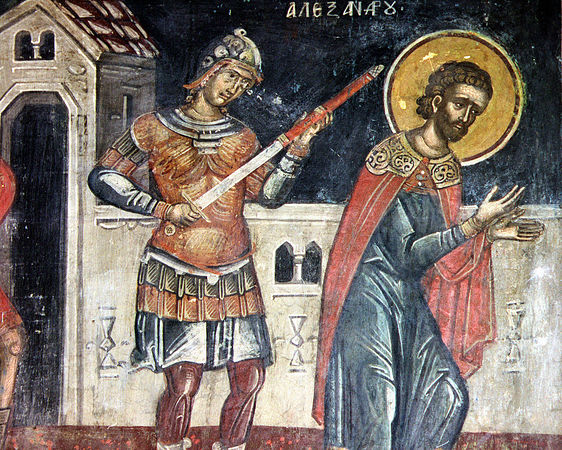 He was a Slav, an eighteen-year-old soldier in the army of the Emperor Maximian. He refused to obey the imperial order to offer sacrifice to the Roman idols, because of which it fell to Captain Tiberian to tell him either to deny Christ or be tortured and killed. As all this advice was in vain, Tiberian arrested him and took him through Macedonia to Constantinople, whither he himself had an errand. In every place, the young Alexander was harshly tortured, but in every place also, Christians came out to him, begging his blessing and encouraging him in his sufferings. His mother, Pimenia, followed him. In the course of this journey, Alexander was many times visited by an angel of God, who eased his pains and encouraged him. In one place called Carasura, the martyr worked a miracle by his prayers: when the soldiers who were escorting him were tormented by thirst, he made a spring of cold water come out of a dry place. On the bank of the river Ergina, Tiberian ordered that the executioner behead Alexander and throw his body into the river. When the executioner swung his axe above Alexander's head, he saw angels of God around him, resplendent with light, and was afraid and stayed his hand. Alexander asked him why he had done this, and he said that he had seen some young men in a nimbus of light surrounding him. Desiring to die and so be united with the Lord, Alexander prayed to God to take the angels away, so that the executioner would not be afraid. And so the executioner completed his work, in 298. Pimenia retrieved the body of her son and gave it burial. There were many hearings at the martyr's grave. After his death, he appeared to his mother and gave her tidings of her own imminent departure to the other world. He was a Slav, an eighteen-year-old soldier in the army of the Emperor Maximian. He refused to obey the imperial order to offer sacrifice to the Roman idols, because of which it fell to Captain Tiberian to tell him either to deny Christ or be tortured and killed. As all this advice was in vain, Tiberian arrested him and took him through Macedonia to Constantinople, whither he himself had an errand. In every place, the young Alexander was harshly tortured, but in every place also, Christians came out to him, begging his blessing and encouraging him in his sufferings. His mother, Pimenia, followed him. In the course of this journey, Alexander was many times visited by an angel of God, who eased his pains and encouraged him. In one place called Carasura, the martyr worked a miracle by his prayers: when the soldiers who were escorting him were tormented by thirst, he made a spring of cold water come out of a dry place. On the bank of the river Ergina, Tiberian ordered that the executioner behead Alexander and throw his body into the river. When the executioner swung his axe above Alexander's head, he saw angels of God around him, resplendent with light, and was afraid and stayed his hand. Alexander asked him why he had done this, and he said that he had seen some young men in a nimbus of light surrounding him. Desiring to die and so be united with the Lord, Alexander prayed to God to take the angels away, so that the executioner would not be afraid. And so the executioner completed his work, in 298. Pimenia retrieved the body of her son and gave it burial. There were many hearings at the martyr's grave. After his death, he appeared to his mother and gave her tidings of her own imminent departure to the other world.Our Holy Fathers John, Euthymius, George and Gabriel of Iviron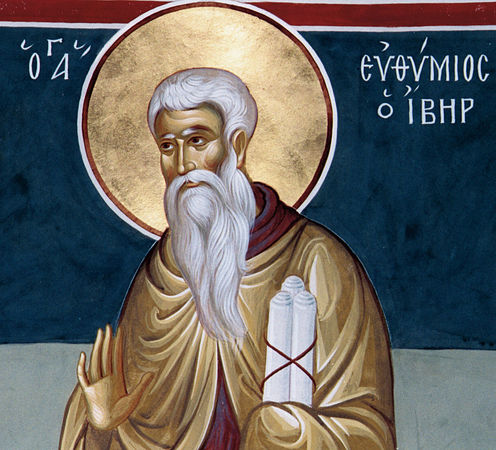 They were the founders of the famous Iviron (Georgian) monastery on the Holy Mountain. St John lived in asceticism first in the Lavra of Athanasius, and then founded his own monastery, Iviron. He entered into rest in 998. Euthymius and George translated the Holy They were the founders of the famous Iviron (Georgian) monastery on the Holy Mountain. St John lived in asceticism first in the Lavra of Athanasius, and then founded his own monastery, Iviron. He entered into rest in 998. Euthymius and George translated the HolySt. Pausicacius, bishop of Synnada (606)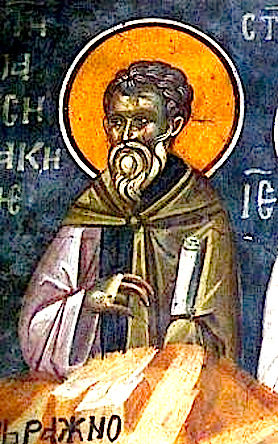 Saint Pausikakios, Bishop of Synada, lived at the end of the VI Century in the Syrian city of Apameia. He had been raised since childhood in the Christian faith by his pious parents, and he began in youth to lead an ascetic life of prayer, vigil and fasting. He was given by the Lord the gift of treating sicknesses of both soul and body. The Constantinople Patriarch Kyriakos (591-606) ordained Saint Pausikakios as bishop of Synada. Saint Pausikakios was zealous in his concern that in his flock there should be neither heretics nor dissolute people... Saint Pausikakios, Bishop of Synada, lived at the end of the VI Century in the Syrian city of Apameia. He had been raised since childhood in the Christian faith by his pious parents, and he began in youth to lead an ascetic life of prayer, vigil and fasting. He was given by the Lord the gift of treating sicknesses of both soul and body. The Constantinople Patriarch Kyriakos (591-606) ordained Saint Pausikakios as bishop of Synada. Saint Pausikakios was zealous in his concern that in his flock there should be neither heretics nor dissolute people...Hieromartyr Alexander of Tiverias
Venerable NicephorusPriest of the monastery of Ephapsios.
St. Sergius the Confessor of Constantinople (9th c.)
St. George the Confessor of Constantinople The Holy Confessor George suffered for the veneration of holy icons at Constantinople in the first half of the IX Century. The emperor Theophilos demanded that Saint George renounce the veneration of holy icons, but the brave confessor refused the order, and declared to the impious emperor, that in venerating holy icons, we give worship to their eternal Primal-Image {i.e. Christ the Logos]. For his disobedience, the emperor gave orders to take away and seize the property of Saint George, and with a rope about his neck to drag him through the streets of Constantinople and then cast him into prison. After this, Saint George was sent off into exile, together with his wife Irene and their children. Having suffered in exile much affliction, the holy Confessor George died.
Martyrs killed by the Latins at the Iveron Monastery on Mt. Athos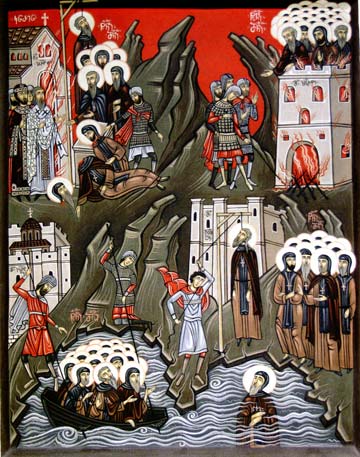 Georgian monks began to settle on Mt. Athos in the middle of the 10th century, and a Georgian monastery, Iveron, was founded there not long after.
At that time foreign armies were constantly invading Mt. Athos. In the 13th century the Crusaders stormed through the region, and between 1259 and 1306 the pope’s private army devastated Mt. Athos several times. Monks of Zographou and Vatopedi monasteries and the Protaton were martyred for the Orthodox Faith, and the monks of the Iveron Monastery eventually met the same fate.
During this period Georgian and Greek ascetics labored together at the Iveron Monastery, and many young ascetics of the new generation began to arrive from Georgia... Georgian monks began to settle on Mt. Athos in the middle of the 10th century, and a Georgian monastery, Iveron, was founded there not long after.
At that time foreign armies were constantly invading Mt. Athos. In the 13th century the Crusaders stormed through the region, and between 1259 and 1306 the pope’s private army devastated Mt. Athos several times. Monks of Zographou and Vatopedi monasteries and the Protaton were martyred for the Orthodox Faith, and the monks of the Iveron Monastery eventually met the same fate.
During this period Georgian and Greek ascetics labored together at the Iveron Monastery, and many young ascetics of the new generation began to arrive from Georgia...Righteous Virgin Glyceria of Novgorod (1522)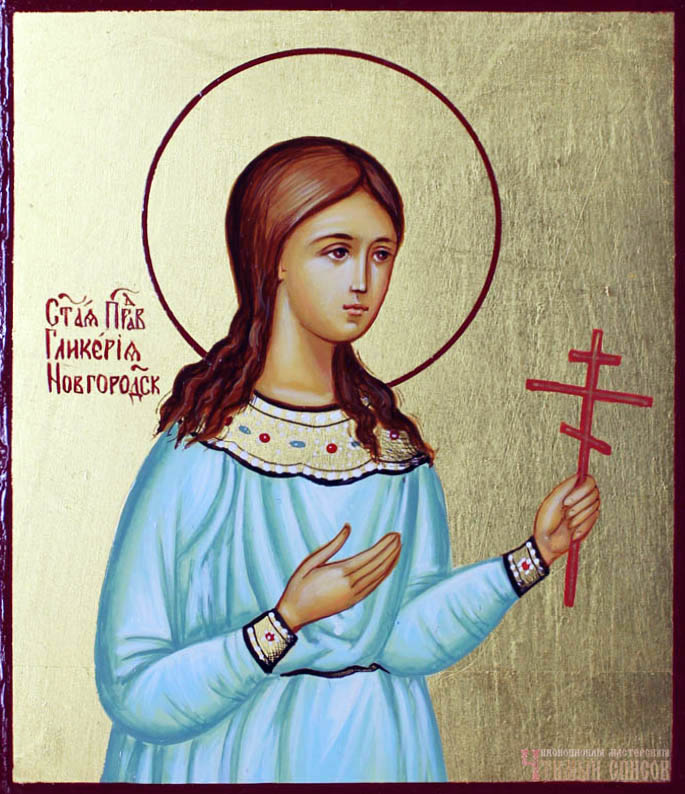 Righteous Saint Glykeria, Novgorod Maiden, daughter of Panteleimon, a starosta of Legoscha Street in Novgorod. The saint died in about the year 1522. Her incorrupt relics, based on the testimony of the second Novgorod Chronicle, were uncovered on 14 July 1572 near the stone church in honour of Sts. Florus and Laurus. The Novgorod archbishop Leonid with an assemblage of clergy gave them solemn burial in this church. During the time of interment, healings occurred from the relics of the saint. Righteous Saint Glykeria, Novgorod Maiden, daughter of Panteleimon, a starosta of Legoscha Street in Novgorod. The saint died in about the year 1522. Her incorrupt relics, based on the testimony of the second Novgorod Chronicle, were uncovered on 14 July 1572 near the stone church in honour of Sts. Florus and Laurus. The Novgorod archbishop Leonid with an assemblage of clergy gave them solemn burial in this church. During the time of interment, healings occurred from the relics of the saint. |